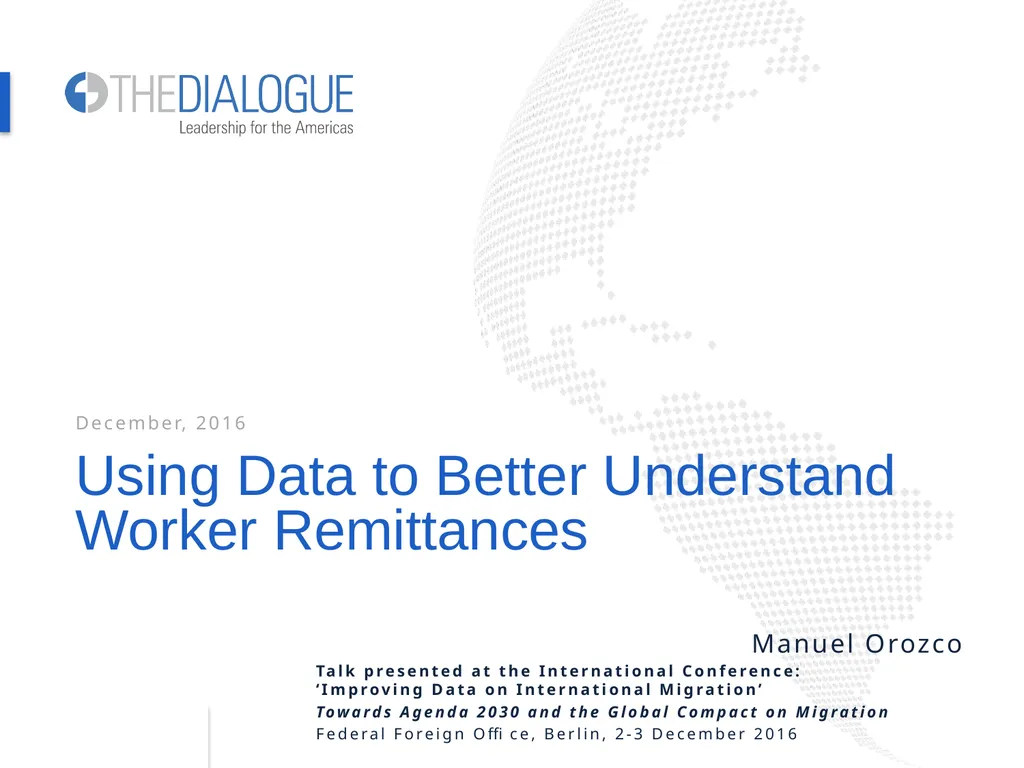
Using Data to Better Understand Worker Remittances
Author: cheryl-pisano | Published: 2025-05-24
Description: Using Data to Better Understand Worker Remittances Manuel Orozco Talk presented at the International Conference: Improving Data on International Migration Towards Agenda 2030 and the Global Compact on Migration Federal Foreign Office,
Download Presentation
Download the PPT/PDF: Download
Transcript:
Loading transcript…